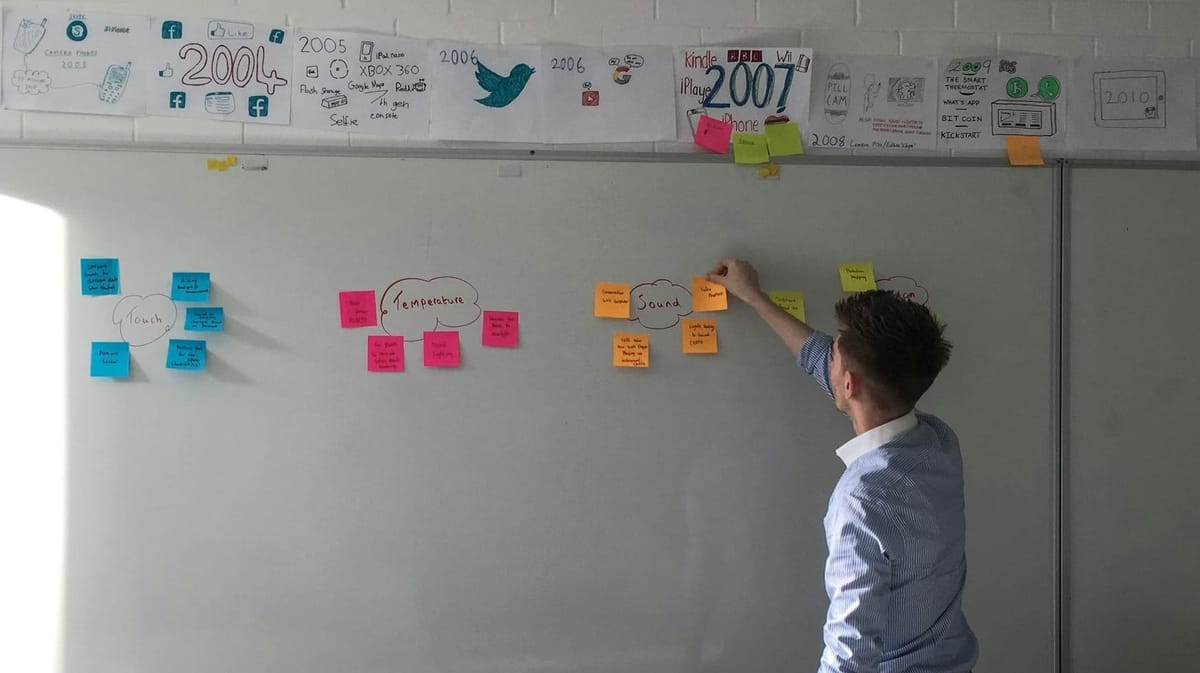Smart Testing: How to Validate Product Ideas Without Breaking the Bank

Building a product without first validating market demand can have serious consequences. Research shows that 42% of startups fail because there's no market need for their product. Too many entrepreneurs burn through their savings creating solutions nobody wants.
"You must always find a market first and then concentrate on a product." - Gary Halbert
The good news? You can test your product ideas with minimal risk and maximum insight using proven validation strategies that successful companies like Dropbox, Airbnb, and Buffer used before they became billion-dollar companies.
The Power of Low-Risk Testing
Low-risk testing allows you to gather real market data before committing significant resources to product development. Instead of spending months building a full product based on assumptions, you can validate core hypotheses in days or weeks with a fraction of the investment.
The fundamental principle is simple: create the smallest possible experiment that generates meaningful data about customer demand, pricing sensitivity, and market viability. This approach follows the scientific method—form a hypothesis, design an experiment, collect data, and draw conclusions.
Why Traditional Market Research Falls Short: Surveys and focus groups tell you what people say they'll do, not what they actually do. Low-risk testing measures actual behavior with real money and genuine interest at stake.
Strategy 1: The Landing Page Test (The Gold Standard)
The Concept: Create a compelling landing page that presents your product as if it already exists, then drive targeted traffic to measure interest and conversion rates. This approach has become the gold standard for early-stage validation because it closely mimics the real purchase experience.
Execution Framework
Landing Page Creation:
- Platforms: Use AI Platforms for speed
- Essential Elements: Clear headline, problem/solution explanation, pricing, strong call-to-action
- Optimization: Under 3-second load time, mobile responsive, trust signals
Traffic Generation:
- Google Ads: $20-50/day, target high-intent keywords
- Facebook Ads: $20-50/day, test different demographics and interests
- LinkedIn Ads: $30-50/day minimum, ideal for B2B products
Measurement Setup:
- Google Analytics 4: Track user behavior and conversions
- Key Metrics: Conversion rate, cost per acquisition (CPA), traffic quality
- A/B Testing: Test headlines, pricing, and call-to-action buttons
Success Benchmarks:
- SaaS Products: 2-5% conversion rate, CPA should be 20-30% of customer lifetime value
- E-commerce: 1-3% conversion rate
- Digital Services: 0.5-2% conversion rate
Real Example: Buffer's founder created a simple landing page with pricing buttons leading to signup forms. With $500 in Facebook ads, he achieved a 3.2% conversion rate and $23 CPA, validating demand before building the product.
Strategy 2: The MVP Spectrum
The Concept: Build the simplest version that delivers core value, but approach this as a spectrum of commitment levels.
The MVP Hierarchy
Level 1: Smoke Test
- Create mockups or wireframes
- Share on social media and measure engagement
- Track likes, comments, and direct messages
Level 2: Explainer Video
- Create 2-3 minute video explaining your product
- Post on landing page or social platforms
- Example: Dropbox's explainer video generated 75,000 signups before building file-syncing technology
Level 3: Concierge MVP
- Manually deliver your service to small customer group
- Use existing tools to simulate final product
- Learn real customer needs and operational requirements
Level 4: Wizard of Oz
- Create appearance of working product while handling processes manually
- Example: Zapier founders manually connected apps for early users while building automation
Level 5: Feature MVP
- Build only critical features using no-code tools
- Tools: Bubble for web apps, Airtable + Zapier for automation, Shopify for e-commerce
Success Metrics
- Usage: 20%+ users return after first session
- Engagement: 2+ minutes average session time
- Feedback: Positive customer interviews and feature requests
- Business: Conversion to paid plans or pre-orders
Strategy 3: Pre-Selling and Crowdfunding
The Concept: Sell your product before you build it to validate demand and secure funding simultaneously. This approach provides the strongest validation signal because customers put actual money at stake.
Platform Selection
Kickstarter (Best for consumer products):
- 5% platform fee, all-or-nothing funding
- Built-in discovery but requires polished presentation
- Average successful project: $20,000-50,000
Direct Pre-Orders:
- Use Shopify with pre-order plugins
- Offer 25-40% early bird discounts
- Set clear delivery timelines
Campaign Success Framework
Pre-Launch:
- Build email list of 1000+ subscribers
- Create professional video and product photography
- Develop compelling founder story and clear value proposition
Launch Strategy:
- Target 20-30% of funding goal in first 48 hours
- Email entire list at launch
- Engage personal network immediately
Success Indicators:
- 20%+ funding in first week
- 1-3% conversion rate from page visitors to backers
- Organic social sharing and media pickup
Strategy 4: Social Media and Community Testing
The Concept: Use social platforms to gauge interest and gather feedback before investing in development, but approach this strategically rather than randomly posting content.
Platform-Specific Approaches
LinkedIn (B2B Products):
- Write thought leadership posts about industry problems
- Create polls asking about pain points and solutions
- Join 10-15 professional groups where target customers gather
Twitter/X (Tech Products):
- Create detailed threads explaining problems and solutions
- Build in public by documenting development journey
- Participate in relevant industry hashtags and chats
Reddit (Niche Products):
- Find 5-10 subreddits where target customers gather
- Provide value first through helpful answers and resources
- Share relevant insights without being promotional
Facebook Groups (Consumer Products):
- Join groups where target customers discuss related problems
- Create polls about preferences and pain points
- Share valuable content and engage authentically
Measurement Strategy
- Engagement Rate: Comments, shares, and direct messages
- Audience Growth: Follower increases from relevant content
- Click-Through: Traffic driven to landing pages or signup forms
- Qualitative Feedback: Comments revealing specific needs and concerns
Strategy 5: The Fake Door Test
The Concept: Add a door (button, link, or menu item) for your proposed feature or product within an existing platform to measure interest without building the actual functionality.
Implementation Methods
Website Integration:
- Add menu items for potential new products
- Include call-to-action buttons for non-existent services
- Track click-through rates to coming soon pages
App Integration:
- Show new feature options to percentage of users
- Add settings toggles for features that don't exist yet
- Measure how many users attempt to access them
Email and Content Testing:
- Include links to new products in email signatures
- Write blog posts about potential offerings with signup CTAs
- Test different concepts across content marketing
Success Metrics
- Click-Through Rate: 2-5% indicates strong interest
- Email Signups: 10-25% of clickers should convert
- User Feedback: Follow up with surveys to understand intent
Calculating Your Go/No-Go Decision
Key Metrics Framework
Customer Acquisition Metrics:
- Cost Per Acquisition (CPA): Total marketing spend ÷ conversions
- Conversion Rate: Percentage completing desired action
- Traffic Quality: Time on site, bounce rate, engagement depth
Business Viability Metrics:
- Customer Lifetime Value (LTV): Projected revenue per customer
- Market Size: Search volume, competitor analysis, addressable market
- Pricing Validation: Willingness to pay at proposed price points
Decision Matrix
Green Light (Score 70-100):
- CPA less than 30% of projected LTV
- Conversion rates exceed industry benchmarks
- Strong qualitative feedback and organic sharing
- Clear path to profitable customer acquisition
Yellow Light (Score 50-69):
- Mixed signals requiring additional testing
- Some positive metrics but concerning indicators
- Need to iterate on messaging, pricing, or target market
Red Light (Below 50):
- High acquisition costs relative to value
- Low conversion rates across multiple tests
- Minimal organic interest or negative feedback
Real-World Case Studies
Airbnb's Photo Testing Strategy
Challenge: Low booking rates and poor host engagement
Test: Professional photography for 20 properties vs. control group with amateur photos
Investment: $5,000 for professional photography
Results:
- 2-3x increase in bookings for professional photos
- 2.5x higher revenue per listing
- 95% host satisfaction improvement
Impact: Led to Airbnb's photography service and differentiated from competitors like Craigslist
Slack's Internal Tool Evolution
Origin: Communication tool built for internal gaming company coordination
Testing: Used internally for months, then shared with startup network
Metrics: 15,000% growth in daily messages within 6 months, 500% month-over-month team signups
Key Insight: Solved their own problem first, focused on usage intensity over user numbers
Common Pitfalls and Solutions
Testing Design Mistakes
Pitfall: Over-engineering tests instead of simple experiments
Solution: Start with simplest possible test that answers core question
Pitfall: Testing multiple variables simultaneously
Solution: Test one variable at a time using systematic A/B testing
Pitfall: Insufficient sample sizes for meaningful results
Solution: Calculate required sample sizes before starting (minimum 100 conversions per variant)
Target Audience Issues
Pitfall: Testing with wrong audience or relying too heavily on friends and family
Solution: Define ideal customer profile and use 80% cold prospects, 20% warm network
Pitfall: Ignoring negative feedback while focusing only on positive signals
Solution: Actively seek contradicting evidence for every positive data point
From Testing to Building
Low-risk testing isn't just about validating ideas - it's about building a systematic approach to understanding your market before making significant investments.
The strategies in this guide have helped thousands of entrepreneurs avoid costly mistakes and build products customers actually want.
Core principles to remember:
- Start small and scale based on results
- Measure behavior, not opinions
- Test your riskiest assumptions first
- Let customer feedback guide decisions
- Build only what's been validated
The most successful products emerge from systematic testing, learning, and iteration. Every test you run brings you closer to building something people truly want.
Keep Crushing!
- Sales Guy

